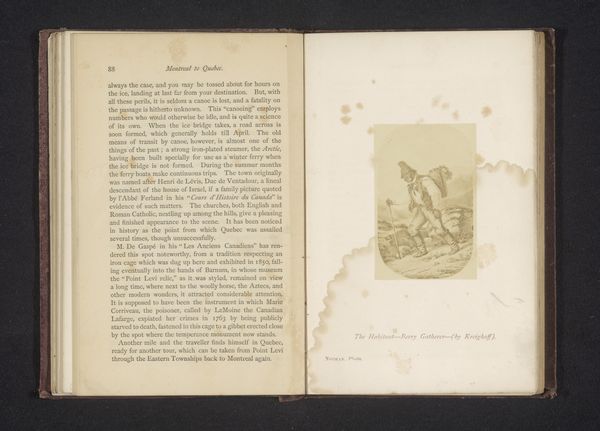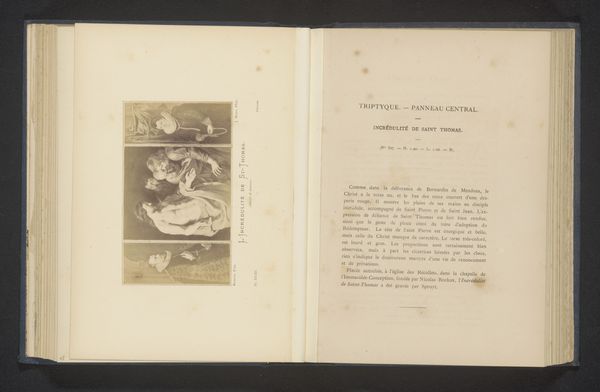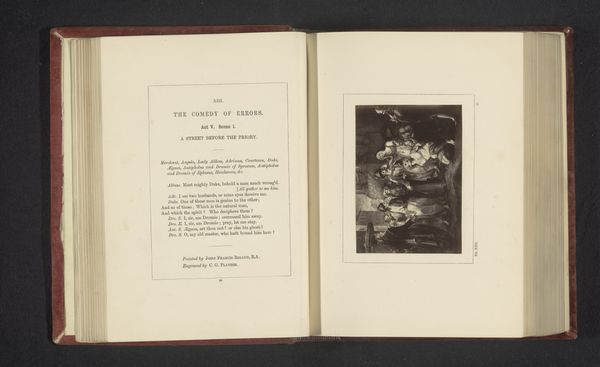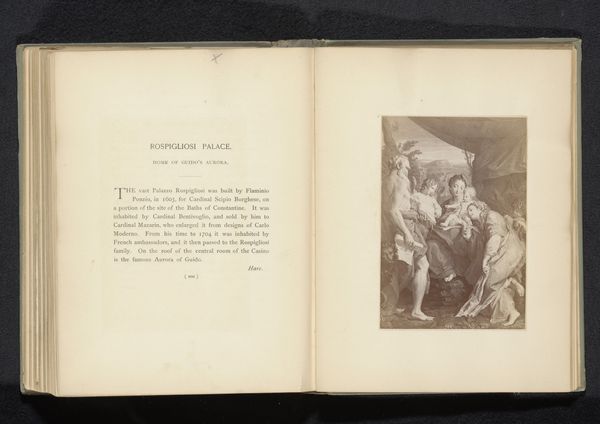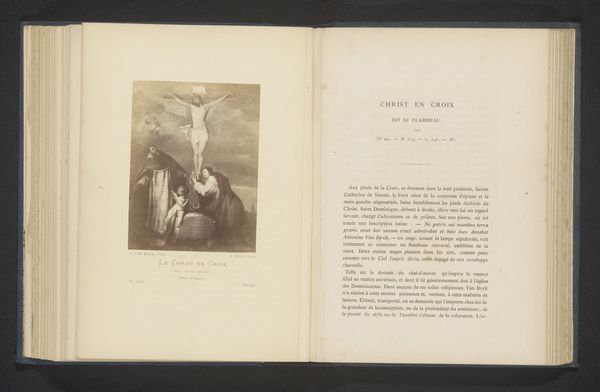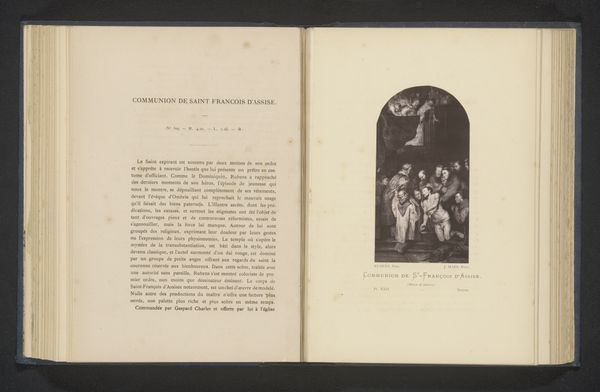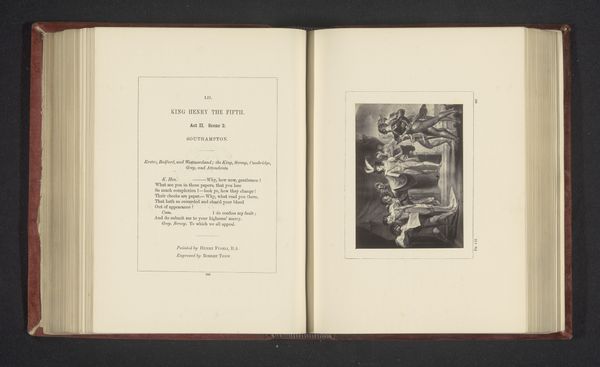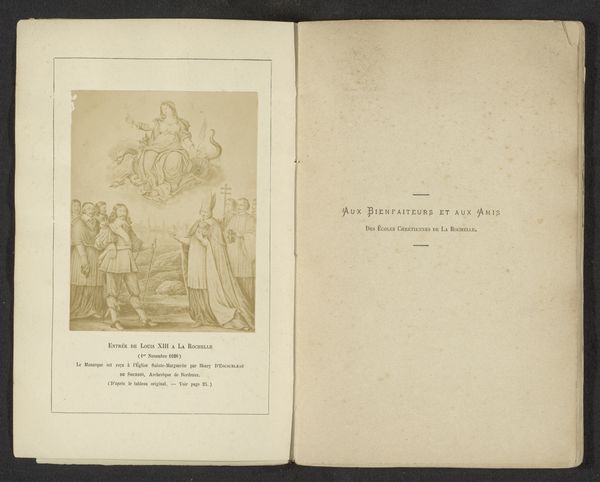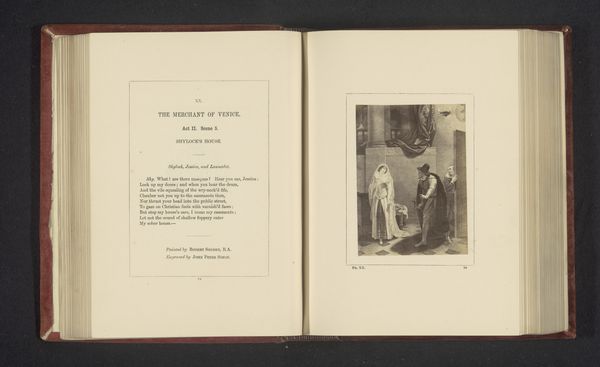
Fotoreproductie van een prent naar een reliëf van de Boydell Shakespeare Gallery in Londen, voorstellend William Shakespeare geflankeerd door twee muzen before 1864
0:00
0:00
print, etching, sculpture
#
portrait
#
script typeface
#
aged paper
#
neoclassicism
# print
#
etching
#
sketch book
#
personal journal design
#
personal sketchbook
#
journal
#
fading type
#
sculpture
#
thick font
#
history-painting
#
handwritten font
#
historical font
Dimensions: height 96 mm, width 73 mm
Copyright: Rijks Museum: Open Domain
Editor: This is a reproduction, a photographic print of an etching after a sculpture – quite a chain of material processes! It dates to before 1864 and features Shakespeare flanked by muses. It’s fascinating to see how they captured the texture of the original sculpture. What stands out to you about the materiality of this image? Curator: I’m drawn to the way the layered production process influences our perception. The initial act was carving stone. Then that relief was re-presented through engraving, inking, and printing. Finally, photography further flattens and disseminates the image. Each stage involved different labor. How does that impact the art’s aura and value, especially when considered in light of the Shakespeare Gallery’s aim to popularize art? Editor: That's a good point about aura. This image isn't the unique artwork but rather an accessible copy. It democratizes art, making it available to a wider audience. The materiality here speaks of reproduction, distribution, and consumption rather than a singular act of creation. It seems like an early form of art merchandising! Curator: Precisely. We see here the commodification of artistic genius. Consider also how this relates to the industrial revolution – etching allows for mass production while emulating handcrafted detail. Were these prints intended for the middle classes? For educational purposes, maybe? Editor: Perhaps both! It highlights a fascinating tension – wanting to celebrate the unique skill of sculpting while embracing new technologies of reproduction. Thanks for helping me see those contradictions and complexities in this artwork. Curator: It is important to consider production and its effects when understanding the power dynamics between artist, audience, and commodity.
Comments
No comments
Be the first to comment and join the conversation on the ultimate creative platform.

